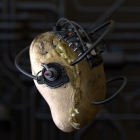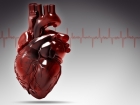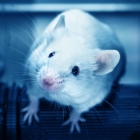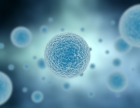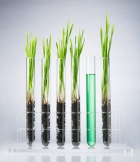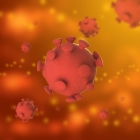Press monitoring
Nanocapsule reaches cancer that has spread to central nervous system in mice
14.8.2019 | Press monitoring
Cancer that has spread to the central nervous system is notoriously difficult to treat. Now, UCLA researchers have developed a drug delivery system that breaks through the blood-brain barrier in order to reach and treat cancer that has spread to the central nervous system. In research conducted in mice, a single dose of cancer drugs in a...
Cyborg organoids offer rare view into early stages of development
12.8.2019 | Press monitoring
What happens in the early days of organ development? How do a small group of cells organize to become a heart, a brain, or a kidney? This critical period of development has long remained the black box of developmental biology, in part because no sensor was small or flexible enough to observe this process without damaging the cells. Now,...
3D printing the human heart
9.8.2019 | Press monitoring
A team of researchers from Carnegie Mellon University has published a paper in Science that details a new technique allowing anyone to 3D bioprint tissue scaffolds out of collagen, the major structural protein in the human body. This first-of-its-kind method brings the field of tissue engineering one step closer to being able to 3D print a...
Chimeric mighty mouse with human brain cells to advance Alzheimers research
7.8.2019 | Press monitoring
Researchers from University of California, Irvine have developed a new transgenic mouse model with human brain immune cells. The novel breakthrough will allow scientists the ability to observe how human brain cells respond to different Alzheimer's-inducing toxic proteins, significantly advancing our understanding into how neurodegenerative...
Scientists develop novel nano-vaccine for melanoma
5.8.2019 | Press monitoring
Researchers at Tel Aviv University have developed a novel nano-vaccine for melanoma, the most aggressive type of skin cancer. Their innovative approach has so far proven effective in preventing the development of melanoma in mouse models and in treating primary tumors and metastases that result from melanoma. The focus of the research is on a...
Researchers build artificial cells that sense and respond to their environment
2.8.2019 | Press monitoring
The artificial cells could be used to sense changes in the body and respond by releasing drug molecules, or to sense and remove harmful metals in the environment. However, in natural cells these chemical responses can be very complex, involving multiple steps. This makes them difficult to engineer, for example if researchers wanted to make...
To feed its 1.4 billion, China bets big on genome editing of crops
31.7.2019 | Press monitoring
Chinese leaders “want to strategically invest in genome editing, and [by that] I mean, catch up,” says Zhang Bei, who heads a team of 50 scientists at the Syngenta Beijing Innovation Center and works closely with a sister R&D facility in Durham. “And they also want to be the global leader as well in this area.” China may one day need...
Antibiotic-resistant genes found in Londons canals and ponds
29.7.2019 | Press monitoring
Central London's freshwater sources contain high levels of antibiotic resistant genes, with the River Thames having the highest amount, according to research by UCL. The Regent's Canal, Regent's Park Pond and the Serpentine all contained the genes but at lower levels than the Thames, which contained genes providing resistance for bacteria to...
Worm pheromones protect major crops
26.7.2019 | Press monitoring
Protecting crops from pests and pathogens without using toxic pesticides has been a longtime goal of farmers. Researchers at Boyce Thompson Institute have found that compounds from an unlikely source – microscopic soil roundworms – could achieve this aim. These compounds helped protect major crops from various pathogens, and thus have potential...
Bacteria-killing gel heals itself while healing you
24.7.2019 | Press monitoring
McMaster researchers have developed a novel new gel made entirely from bacteria-killing viruses. The anti-bacterial gel, which can be targeted to attack specific forms of bacteria, holds promise for numerous beneficial applications in medicine and environmental protection. Among many possibilities, it could be used as an antibacterial coating...

